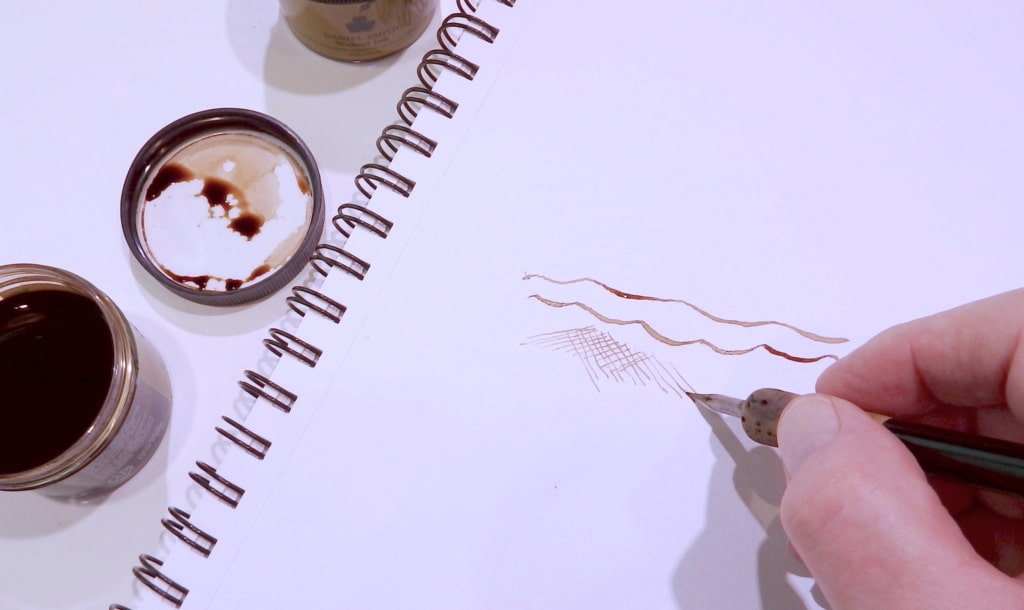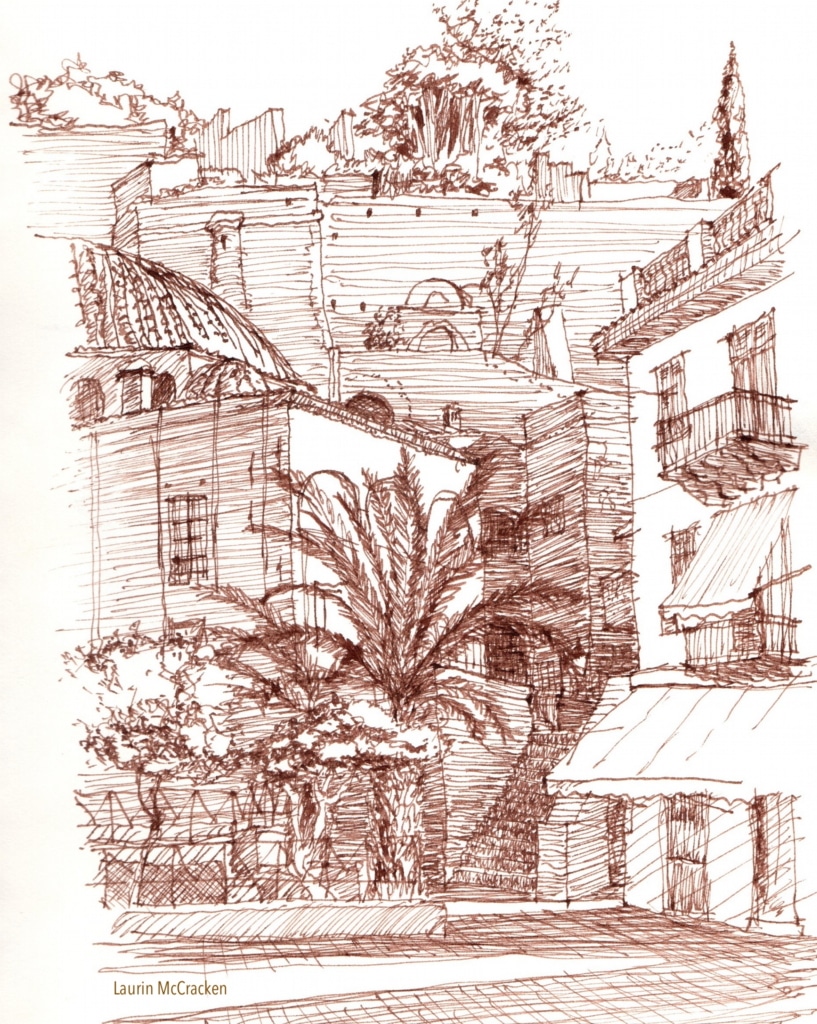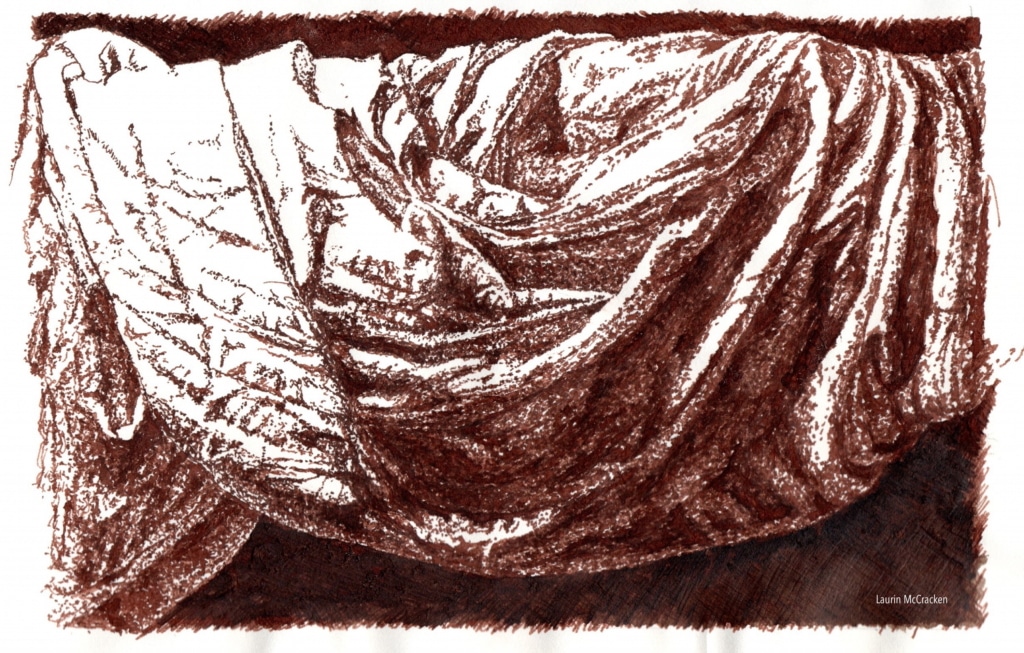Share:
I have been using walnut ink since I was in architecture school and discovered for myself what a rich and lively drawing medium it is. DANIEL SMITH Walnut Ink works well on almost any sketchbook paper made. It can also be used on many other surfaces from watercolor paper to illustration board.
When I am traveling, I like to take along a fountain pen or two, one of which is loaded with Walnut Ink. In my field sketches, I either use a square calligraphy point or a flexible fine point. With these steel nibs, I can make very fine lines and dots, lines of varying widths, as well as cross-hatching. You can build up layers of cross-hatching for dark areas, as in my drawing below of Nafplion, Greece.
You can also develop a range of dark areas by using a pointillist technique, as in my drawing called Rumpled Sheets.
Walnut Ink is water-soluble, especially when it is still damp. When you finish your line drawing, you can create shading with a damp brush, as I shaded the snow in my drawing of trees in Steamboat Springs where I went skiing.
Sometimes I use a sharp steel nip to do a quick sketch, as in the Giant Amazon Toad I drew while visiting the Houston Zoo.
Walnut Ink can also be combined with watercolor to great effect for quick plein air sketches. I hope you will enjoy using DANIEL SMITH Walnut Ink as much as I do!










